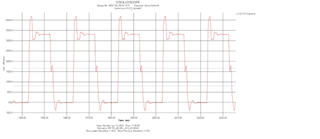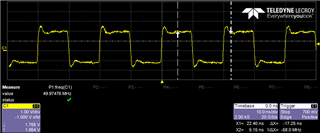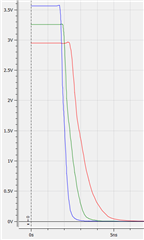I’m currently working on some signal integrity analysis for a spin of a PCBA, and we are using the TI SN74AVC32T245NMJR level-translator on our board (three of them actually).
During some post-route sims I noticed some unexpected waveforms related to the corresponding IBIS model (attached). I also dug up some forum posts and compared to measurements in the lab that lead me to believe there is something wrong with the model, specifically when using the “typical” IC model case.
TI Support case I found related to this: https://e2e.ti.com/support/logic-group/logic/f/logic-forum/829351/sn74avc8t245-ibs-model-avc8t245_io_33-show-non-monotonic-falling-edges
My observations:
- My net topology

- My Hyperlynx simulated waveform with 100MHz oscillator model measured at pin of U113 with “typical” IC modeling.
- Non-monotonic falling edge is predicted – this is only for typical case

- Lab observation (using active probe with <1pF capacitance)

As you can see, the falling edge is different when comparing simulation to reality. The non-monotonicity of the model almost lead us to select a different part, and really erodes my confidence in using TI parts/IBIS models in the future.
Is there an updated model that can be used? I see this model is from 2004 and hasn’t been updated recently.


